Monday, August 28th
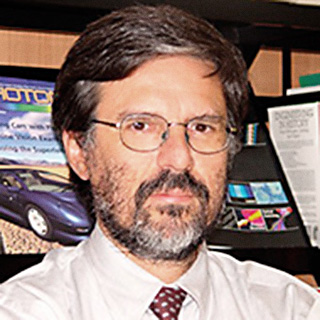
FAPESP Scientific Director. He is an electronic engineer and a physicist, Brito Cruz is a professor at the Gleb Wataghin Physics Institute, of the State University of Campinas (Unicamp), where he was the rector from 2002 to 2005.He graduated in electronic… More
Although unique potentials of terahertz waves for chemical identification, material characterization, biological sensing, and medical imaging have been recognized for quite a while, the relatively poor performance, higher costs, and bulky nature of current terahertz systems continue to impede their deployment in field settings. In this talk, I will describe some of our recent results on developing fundamentally new terahertz electronic/optoelectronic components and imaging/spectrometry architectures to mitigate performance limitations of existing terahertz systems. In specific, I will introduce new designs of high-performance photoconductive terahertz sources that utilize plasmonic antennas to offer terahertz radiation at record-high power levels of several milliwatts — demonstrating more than three orders of magnitude increase compared to the state of the art. I will describe that the unique capabilities of these plasmonic antennas can be further extended to develop terahertz detectors and heterodyne spectrometers with single-photon detection sensitivities over a broad terahertz bandwidth at room temperatures, which has not been possible through existing technologies. To achieve this significant performance improvement, plasmonic antennas and device architectures are optimized for operation at telecommunication wavelengths, where very high power, narrow linewidth, wavelength tunable, compact and cost-effective optical sources are commercially available. Therefore, our results pave the way to compact and low-cost terahertz sources, detectors, and spectrometers that could offer numerous opportunities for e.g., medical imaging and diagnostics, atmospheric sensing, pharmaceutical quality control, and security screening systems. And finally, I will briefly highlight our research activities on development of new types of high-performance terahertz passive components (e.g., modulators, tunable filters, and beam deflectors) based on novel reconfigurable meta-films.
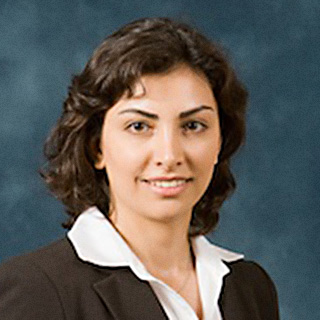
Mona Jarrahi received her B.S. degree in Electrical Engineering from Sharif University of Technology in 2000 and her M.S. and Ph.D. degrees in Electrical Engineering from Stanford University in 2003 and 2007. She served as a Postdoctoral Scholar at… More
Wireless devices are becoming more diverse with not just over 6 billion wireless phones but also possibly a much larger number of sensors, machines contributing to machine to machine communication, and practical everything in the so called Internet of Things (IoT). With an anticipated growth to 100 billion IoT devices by year 2025, more dense radio networks are emerging. Both data and signaling from mobile devices are expected to grow exponentially over the next five or more years. The cellular networks serving cellular phones and mobile devices globally have employed centralized control with different network functions arranged in a hierarchy. On the other hand, the Internet which is originally built for fixed users is making perhaps the biggest changes to serve the wireless users. Meanwhile networks are being transformed with software defined networking as well as network function virtualization and cloudification as the technologies in communication technologies and information technologies are merging. Standards to define 5G technologies are underway.
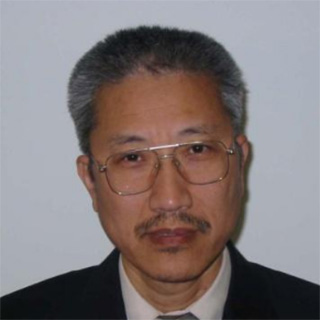
H. Anthony Chan received his PhD in physics at University of Maryland, College Park in 1982 and then continued post-doctorate research there in basic science. After joining the former AT&T Bell Labs in 1986, his work moved to industry-oriented research in… More
This talk will provide an update on the progress of Keysight and various partners on Microwave Medical Imaging products, systems, and their commercialization. It will approach the physical basis for this imaging modality and then provide an update on the progress to date of a number of product trials and commercialization activities from Dune Medical, Micrima, Medfield Diagnostics, EMTensor, and MiWa technologies. Extensive references are included. These are not comprehensive but representative of the research ongoing in Microwave Medical Imaging.
Tuesday, August 29th
From the first recorded use of optical communications using fire beacons, there have been many turning points in the development of optical communications over history. Innovations have included semaphore networks, single mode optical fibres, and optically amplified wavelength division multiplexed networks. Each turning point has fundamentally altered the way we view communications as a whole, with the deployment of optically amplified networks underpinning the internet, social media, e-commerce, indeed our modern way of life. Whilst there is still a long way to go in terms of deployment, especially in the last mile, there is a feeling that the next turning point is around the corner. Technologies contending to become the next turning point include all-optical nonlinearity compensation, novel new fibres such as hollow-core or advanced multi-mode, optical networking for short range (e.g. data centre) applications, converged fixed wireless networks and massive spatial diversity. In this presentation, we will review the most recent research in optical communications, examine the impact on energy consumption and speculate on the societal changes that may be enabled by the next generation of communication technology.
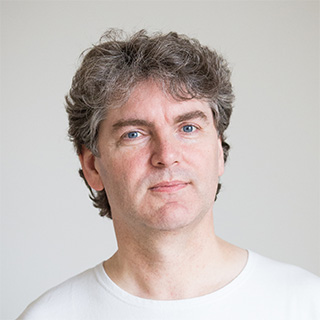
He received the Ph.D. degree in electronic and electrical engineering from The University of Aston in Birmingham, Birmingham, U.K., in 1997 for his study on all optical networking beyond 10 Gbit/s. He is now Professor of Optical Communications at Aston… More
Optical fibers have been used for sensing and measurement for decades. Recently, however, the use of fibers in industrial environments became much more accepted. Some of the driving forces behind this development include the concept that machines must also tell us how they are doing, the introduction of new classes of materials, and the need for increased efficiency in industrial processes, for example at high temperature or under the sea. All these open new opportunities for the use of fibers. Likewise, the needs for monitoring the environment, for safety and for human health are examples of challenges that require advanced sensing. The known advantages of optical fibers are then increasingly explored in monitoring temperature, pressure, movement, distance, acceleration, electric and magnetic fields and current and many other parameters. In this talk, we will discuss possibilities opened by the use of advanced fibers and techniques for sensing and measurement, and give some examples of recent work in the area.

Senior scientist at Acreo and guest professor at KTH Royal Institute of Technology, having worked for 30 years in photonics and specialty optical fibers. Some of the research lines developed are nonlinear optics, distributed sensing and optofluidics in… More
Wednesday, August 30th
This last decade has witnessed the emergence, growth and consolidation of software defined networking, underpinned by merchant silicon hardware and open source software, in warehouse scale datacenters across the globe. Attention is turning to how SDN might be adapted, re-purposed and deployed in telecommunications networks. This talk will consider the prospects (and highlight some of the pitfalls) for SDN in the coming decade to transform telecommunications networks across the globe.
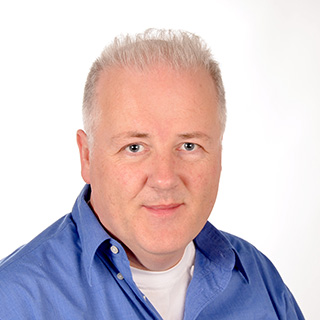
Graduated with the B. Sc. degree in applied physics from Dublin City University, Dublin, Ireland, in 1992, and received the M. Sc. degree in laser physics and the Ph.D. degree in photonic switching networks from Essex University, Colchester, U.K., in 1995… More
In the near future, optical fiber access transport needs to be scalable to support the projected 5G deployment goals. When the topic of 5G wireless is discussed, the first though isn't optical communications. However, this architecture more than just a radio access technology, encompasses the entire network infrastructure, from optical core to radio access network. Besides the obvious implications for the core transport, that can only be achieved by exploring new and advanced technologies, like SDM along with energy efficient coherent detection based modulation formats, the improvement of coverage, capacity, and overall Quality of Experience in datacenter and downtowns, can rely in free-space links, which are a low cost and a flexible solution. By introducing additional orthogonal multiplexing dimensions, like the space and the orbital angular momentum, along with advanced modulation formats we are proposing optical backhaul solutions with very-high capacity, spectral efficiency, and energy efficiency, and low cost per bit for visible light communication links. The concept of wavefront spatial-phase modulation VLC transmission and the generation of OAM carrying beams are robust and suitable solutions to overcome some obstacles of today's networks, such as the improvement of spectral efficiency. Such kind of solution will reveals of most importance to face the increasing bandwidth demand and challenging requirements arising from new applications in very high capacity future 5G networks.
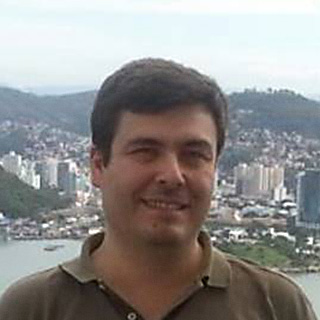
He graduated and obtained a PhD in Physical Engineering from the University of Aveiro, Portugal, respectively in 1996 and 2002. Since 2013 he has been Associate Professor at Instituto Superior Técnico — Universidade de Lisboa, where he has taught subjects… More

August 27th—30th
Águas de Lindoia, Brazil
We can be reached at contact@imoc2017.com.
This website and the event’s visual identity were created by Preface design.